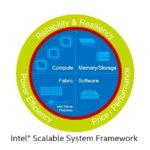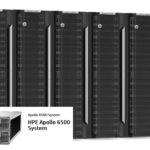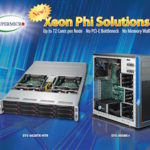Since 2008, the Intel and Cray have rapidly increased their collaboration to the benefit of the supercomputing market and customers. “Most recently, Cray has announced win after win for its Cray XC series systems that feature the Intel Xeon Phi processor, code-named Knights Landing and Knights Hill, which offers peak performance of over half-a-petaflop per cabinet—a 2X performance boost over previous generations. Cray is leading the charge toward many-core-CPU systems that boost application performance without the aid of GPUs.”
It’s Here: The Print ‘n Fly Guide to SC16 in Salt Lake City
At insideHPC, are very pleased to publish the Print ‘n Fly Guide to SC16 in Salt Lake City. We designed this Guide to be an in-flight magazine custom tailored for your journey to SC16 — the world’s largest gathering of high performance computing professionals. “Inside this guide you will find technical features on supercomputing, HPC interconnects, and the latest developments on the road to exascale. It also has great recommendations on food, entertainment, and transportation in SLC.”
A New Generation of Performance with Intel Xeon Phi
“With up to 72 out-of-order cores, the new Intel Xeon Phi processor delivers over 3 teraFLOPS (floating-point operations per second) of double-precision peak while providing 3.5 times higher performance per watt than the previous generation. As a bootable CPU with integrated architecture, the Intel Xeon Phi processor eliminates PCIe* bottlenecks, includes on-package high-bandwidth memory, and available integrated Intel Omni-Path fabric architecture to deliver fast, low-latency performance.”
Video: Intel Xeon Phi (KNL) Processor Overview
Adrian Jackson from EPCC at the University of Edinburgh presented this tutorial to ARCHER users. “We have been working for a number of years on porting computational simulation applications to the KNC, with varying successes. We were keen to test this new processor with its promise of 3x serial performance compared to the KNC and 5x memory bandwidth over normal processors (using the high-bandwidth, MCDRAM, memory attached to the chip).”
Video: Intel Scalable System Framework
Gary Paek from Intel presented this talk at the HPC User Forum in Austin. “Traditional high performance computing is hitting a performance wall. With data volumes exploding and workloads becoming increasingly complex, the need for a breakthrough in HPC performance is clear. Intel Scalable System Framework provides that breakthrough. Designed to work for small clusters to the world’s largest supercomputers, Intel SSF provides scalability and balance for both compute- and data intensive applications, as well as machine learning and visualization. The design moves everything closer to the processor to improve bandwidth, reduce latency and allow you to spend more time processing and less time waiting.”
DDN Powers High Performance Data Storage Fabric at University of Queensland
“The University’s researchers are making landmark discoveries in fields spanning human heritable disease, cancer, agriculture and biofuels manufacture – and they depend on our IT team to provide them with the fastest, most efficient data storage and compute systems to support their data-heavy work,” said Professor David Abramson, University of Queensland Research Computing Center director. “Our IBM, SGI (DMF) and DDN-based data fabric allows us to deliver ultra-fast multi-site data access without requiring any extra intervention from researchers and helps us to ensure our scientists can focus their time on potentially life-saving discoveries.”
Facilitate HPC Deployments with Reference Designs for Intel Scalable System Framework
With Intel Scalable System Framework Architecture Specification and Reference Designs, the company is making it easier to accelerate the time to discovery through high-performance computing. The Reference Architectures (RAs) and Reference Designs take Intel Scalable System Framework to the next step—deploying it in ways that will allow users to confidently run their workloads and allow system builders to innovate and differentiate designs
HPE Solutions for Deep Learning
Coming in the second half of 2016: The HPE Apollo 6500 System provides the tools and the confidence to deliver high performance computing (HPC) innovation. The system consists of three key elements: The HPE ProLiant XL270 Gen9 Server tray, the HPE Apollo 6500 Chassis, and the HPE Apollo 6000 Power Shelf. Although final configurations and performance are not yet available, the system appears capable of delivering over 40 teraflop/s double precision, and significantly more in single or half precision modes.
Supermicro Now Shipping Intel Xeon Phi Systems with Omni-Path
“With our latest innovations incorporating Intel Xeon Phi processors in a performance and density optimized Twin architecture and 100Gbps OPA switch for high bandwidth connectivity, our customers can accelerate their applications and innovations to address the most complex real world problems.”
Video: Matching the Speed of SGI UV with Multi-rail LNet for Lustre
Olaf Weber from SGI presented this talk at LUG 2016. “In collaboration with Intel, SGI set about creating support for multiple network connections to the Lustre filesystem, with multi-rail support. With Intel Omni-Path and EDR Infiniband driving to 200Gb/s or 25GB/s per connection, this capability will make it possible to start moving data between a single SGI UV node and the Lustre file system at over 100GB/s.”












